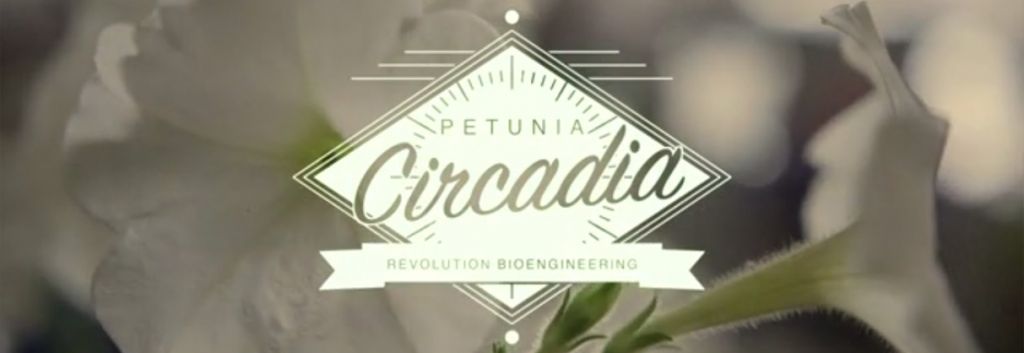A changing-color flower that goes from blue to red and viceversa? It may sound like science fiction, but it’s purely biotechnology. A simple petunia to make a statement: gene engineering is not something to be afraid of. Biotechnology has so many applications that go from nourishing the increasing world population to growing beautiful flowers to brighten up your day.
The debate on GMOs and bioengineering has become increasingly polarized over the years, but recently, consumer-oriented biotechnology has begun to have an impact on that discussion. The recent USDA approval of genetically engineered non-browning Arctic apples, developed by Okanagan Specialty Fruits, has started a new wave of curiosity about the direct-to-consumer benefits of biotechnology, a trend Revolution Bio wants to encourage.
With the help of synthetic biology, these color-changing flowers have been engineered to change color from light to dark over the course of the day. While genetically engineered plants are usually associated with agriculture, Revolution Bio founders Keira Havens and Nikolai Braun have taken that technology to another level, bringing it out of that limited context and developeding it for consumers. The color changing flower is a tangible, beautiful demonstration of biotechnology’s ability to shape our world with wide appeal to everyone from science enthusiasts to grandmothers. Havens commented, “Biotechnology is a tool we can use as we choose. We’re choosing a more beautiful future.”

Dr. Braun outlined the concept behind the project. “Plants have circadian rhythms: cyclical expression of genes throughout the day. This allows them to start photosynthesis when the sun comes up or release fragrance in the evening when their pollinators are active. Petunia Circadia will harness this internal clock to regulate flower color, resulting in a flower that changes color over approximately twelve hours.”

Revolution Bioengineering is collaborating with a consortium of artists and scientists led by Professor Helen Storey CBE London College of Fashion, University of the Arts London with textile artist Patricia Belford (Ulster University) to develop a Living Dress which features the color changing flowers. The Living Dress will illustrate how we can harness nature to reconnect us back to the impact humans have on our natural world and how the two seemingly unconnected worlds of fashion and science can enlighten and come together. The Living Dress will be displayed up to three months in London.

Revolution Bio is including the public from the beginning, crowdfunding their colorful research on Indiegogo. Depending on the amount of money they reach, they settled different objectives: a petunia that works as an air-freshener with vanilla smell, the elusive true-blue rose (that researches have been pursuing for decades), and last but not least, Petunia circadia, the flower that changes color by itself. As an exchange for the crowdfunding support, Revolution Bio will give color-changing petunias that goes from white to red if they are watered with a dilute ethanol solution (leftover beer will work).
Every contribution is a commitment to beautiful biotechnology and an amazing future. As Keira Havens said: “No chemicals, no complicated care, just sunlight, soil and a flower that changes color.” ❀ ✿





